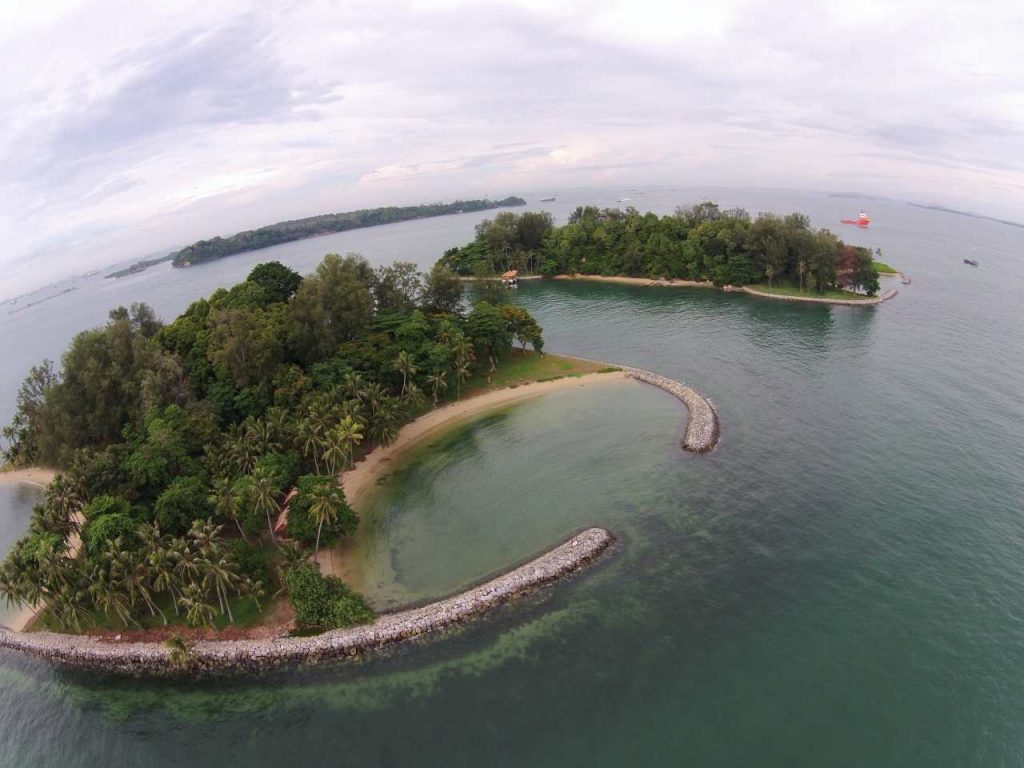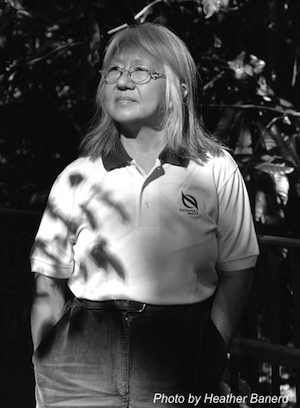In Conversation with Lena Chan
July 27, 2018
Lena Chan
Lena Chan has been called Singapore’s Mother Nature, a title that is certainly well earned.
Her passion for ecological conservation, and love of the plants and animal species she considers ‘citizens’ of Singapore, is contagious.
She has been instrumental in developing the City Biodiversity Index, also known as the Singapore Index (SI) on Cities’ Biodiversity, which has established Singapore as a world leader in urban ecological conservation; the Nature Conservation Masterplan; and in developing ways for enthusiastic residents to get involved in biodiversity conservation.
HB: You have an interesting background, beginning your career in parasitology rather than ecology. How did you become involved in biodiversity conservation?
LC: I have always been the tomboyish kind, right from childhood. My parents had a plantation and I used to help them on the weekends—well, I hoped to be a bit helpful but mostly ran around, went fishing in the stream, and was a bit of a nuisance. But I learned a bit about integrated agriculture and wildlife, and I was always very close to nature. Through my first degree, my masters and Ph.D., I did a lot of fieldwork and I was always extremely interested in ecology. My Ph.D. was on treating and controlling human worm infections in a slum community in Kuala Lumpur, where they had limited access to medicine. This doesn’t seem to relate to ecology, but actually, it does because I was testing how to apply an epidemiological model on parasitic infections.
I’ve always looked for a job where there is meaning, scientific credibility, social cause, and equity. So all my experiences have accumulated and enabled, in some way, my present work. After my degree, I was awarded a research fellowship by World Wildlife Fund Malaysia to do a state-by-state conservation plan for Malaysia. This was a dream job because we got to travel to remote natural areas and find innovative solutions to carry out biodiversity conservation. At that time, no one had really heard of conservation—they associated it with saving cute animals like pandas, but no one thought about conserving natural resources, including plants
and animals. We were given a great opportunity to do pioneering work in the collection of relevant data for biodiversity conservation from 1981 to 1987. This was all on a state-by-state basis because at the country level, conservation was too broad a scale to be effective, so the state-controlled land use and utilization of natural resources. Through this, I learned how to work at the right scale, and how to move between scales; scaling up and scaling down. When you scale down from the state level, cities are the next big thing. In 2008, UN-Habitat said there are now more people living in cities than rural areas, and therefore we are moving into the Age of Cities. Singapore is unique in that it is both a nation and a city—complex with diverse issues to take into consideration, but small enough to be able to integrate and incorporate multiple sectorial concerns.
“If you have clean water, clean air, you recycle your materials, but you have no trees, no birds singing—is that environmentally sustainable?”
HB: One of the major initiatives you’ve been involved in at NParks was developing the Singapore Index on Cities’ Biodiversity in 2010. Could you tell me how this came about?
LC: It actually began in 2007—all these ecological things have a long gestation period. We were looking at different environmental performance
At that time, many didn’t include small countries like Singapore, as anything below a certain size had to be counted out. So I started wondering firstly why we weren’t included, and secondly why they weren’t considering biodiversity conservation in cities. If you have clean water, clean air, you recycle your materials, but you have no trees, no birds singing—is that environmentally sustainable? I always say if humans were gone, biodiversity would happily thrive without these ‘pests’ around, but if biodiversity was gone, humans could not survive. So biodiversity needs to be included in the environmental sustainability equation.
At the same time, the biodiversity community was noticing that globally, biodiversity has been really suffering, but cities were doing some fantastic things. New York, London, Vancouver—regardless of national policies, the cities had great motivation, the resources
This made me think that we should have an index for measuring biodiversity conservation in cities, so we met with the then executive secretary of the Convention on Biological Diversity (CBD),
“With climate change, we have more extreme conditions putting stress on the environment—so increasing ecosystem resilience is very important.”
“If you don’t know what you have, you can’t manage it well and you don’t know whether you’re losing it or not.“

To read the complete article, get your hardcopy at our online shop/newsstands/major bookstores; subscribe to FuturArc or download the FuturArc App to read the issues!
Previously Published In Conversation
Contact us at https://www.futurarc.com/contact-us for older interviews.


